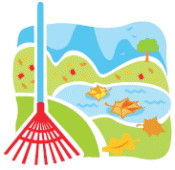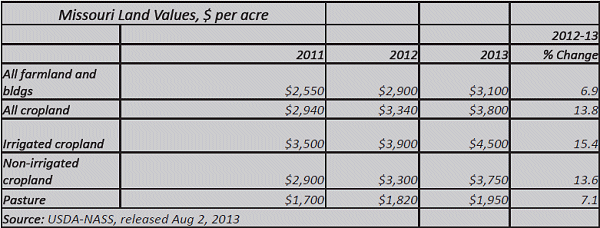

To send a message to an author, click on the author's name at the end of the article.
This Month in Ag Connection | Ag Connection - Other Issues Online

Smart phones are great tools, especially as more applications (apps) are being developed. These can help producers save time and be more productive. University of Nebraska has developed two apps for beef producers to manage herds more conveniently. NUBeef-BCS and NUBeef-UTS are available in Google play (Android) and Apple App Store (iPhones/iPad). NUBeef-UTS is an udder and teat scoring app, based on the Beef Improvement Federations (BIF) scoring system. The app allows producers to compare udder and teat photos from BIF standards to those of their own herd. Producers' understand that cows with poor teat and udder quality can pose problems for their calves. With the NUBeef-UTS app, producers can take pictures of cow udders and compare to the standards at a later time or do it chute-side. This app could help producers make easier culling decisions, as it allows producers to keep a digital record and monitor teat and udder scores.
NUBeef-BCS allows producers to visually assess cows using the body condition scoring (BCS) system that objectively describes the amount of condition (fat reserves) of beef cattle. Producers can snap a digital photo of their cows and score them at important times of the year, such as weaning and before breeding season. The thinner cows/heifers can then be managed and fed differently than cows/heifers in better body condition. The app includes drawings of cows with different BCS that can help when cows/heifers have their winter hair coats and therefore, harder to score. The app has an educational component to it too, for producers and other interested parties new to BCS cattle, as well. The app has a group of body condition scored cows that can be pulled up and used to practice. This is an outstanding tool that anyone can use; from beginning to seasoned beef producers to agriculture teachers and students and anyone else interested. Both apps help with management strategies in beef cow herds. The learning component is not only fun, but educational as well.
Source: Wendy Rapp, Livestock Specialist
This Month in Ag Connection | Ag Connection - Other Issues Online
Just because you're counting down the days until you can put away the lawn mower doesn't mean it's time to forget about taking care of your lawn. Here are a few things that you can do this fall to make sure that your lawn is healthier next spring:
Test Your Soil - When was the last time you tested your soil? If you can't remember, it's been too long. The soil in your lawn should be tested every three to four years. A soil test will show you the pH of your soil, or whether it's "sweet" or "sour". It will also show you the levels of phosphorus (P), potassium (K), and other nutrients. A soil test will also indicate the amount of lime, phosphate (P2O5), or potash (K2O) you should apply if your soil is deficient in these areas. Fall is a great time to test your soil.
Fertilize Your Lawn - When does the grass in your lawn need fertilizer? When it is growing, of course. When is your lawn growing? In the spring, summer, and early fall, of course. But did you know that your lawn is growing in the late fall and early winter as well? The majority of growth during this period is below ground instead of above ground. Grasses spend the fall developing their root systems. Testing your soil and applying needed fertilizer in the fall will insure good root development and a healthier lawn the following spring.
Aerify Your Lawn - Most lawns develop a layer of thatch, or un-decomposed roots and stems, when they are mowed on a regular basis, especially if grass clippings are not bagged. This thatch layer can restrict the movement of water, nutrients, and air into the root-zone of your lawn. Excessive residue can also harbor diseases, insects, and other pests that may damage your lawn. Fall is a great time to dethatch with a power rake.
Control Weeds - During October, November, and December, many broadleaf weeds begin to pop up in lawns throughout Missouri. These weeds, such as chickweed and henbit, are known as winter annuals. Winter annuals complete their lifecycle by early spring so you may never notice them while you're mowing your lawn. This does not mean you should ignore them. Winter annuals compete with your lawn for nutrients, sunlight, and water during that critical period when grasses are developing their root systems. Winter annuals should be treated with a postemergence broadleaf herbicide such as 2,4-D or dicamba during the fall. When winter annuals are treated in the fall you will have less of them competing with your lawn in the spring.

Get Ready For Next Year - Sharpen the blades on your lawnmower. Grasses cut with a sharper blade will be healthier and more disease-resistant than grasses cut with a dull blade. During late winter, you should begin to think about crabgrass control. Many of us only notice crabgrass when it really starts to grow in May or June. Controlling crabgrass at this point can be difficult. Crabgrass is more effectively controlled with a preemergence herbicide applied prior to April 15th.
With the late freezes, heavy rains, and droughts we have experienced the last few years, maintaining a healthy lawn can sometimes be difficult. If you will follow the above steps, your lawn may not always be completely healthy, but you can rest assured that you have given it the best possible opportunity.
Source: Travis Harper & Joni Harper, Agronomy Specialists
This Month in Ag Connection | Ag Connection - Other Issues Online
Earlier this year, the annual meeting of the Beef Improvement Federation was held in Oklahoma City. This national program is unique in that it brings together both animal scientists and beef cattle seedstock and commercial producers to discuss breeding and genetic issues relevant in today's production environment.
Dr. Jack Whittier, Extension Beef Specialist from Colorado State University presented an interesting seminar on heifer development. He identified seven principles for heifer development based on data from over 1,400 cows, 1,200 heifers and over 8,500 head of calves produced by research projects conducted in Montana (1973), Nebraska (2012), and Colorado (2013).
Dr. Whittier's seven principles summarized from the above mentioned research projects are as follows.
Dr. Whittier suggested one approach, when resources allow, is to retain a high percentage of heifer calves, develop them at a modest, but adequate, less expensive rate of gain, synchronize and AI them, and do not use clean up bulls. The heifers should be examined for pregnancy early and open heifers can then be sold or managed as stocker heifers. This results in selection for fertility and helps program heifers to be productive cows.
Developing replacement heifers requires management and attention to details. A sound breeding program needs to be in place in order to effectively manage this task. The breeding program can include timed AI, which enhances the genetic merit of the herd and simplifies crossbreeding programs.
To further enhance the ease of timed AI programs, a portable AI breeding barn is available for rent. Contact Gene Schmitz at the Extension Center in Warsaw at (660) 438-5012 or by e-mail at schmitze@missouri.edu for more information on heifer development or AI barn rental.
Author: Gene Schmitz, Livestock Specialist
This Month in Ag Connection | Ag Connection - Other Issues Online

The majority of husband and wife farm couples report all of the farm income under the name of one spouse, typically the husband. If the marriage lasts for ten years, the concentration of earnings in the name of one spouse may be a good strategy for maximizing Social Security retirement benefits for the amount of self-employment taxes paid. Forty quarters of earning credits under Social Security qualifies you and your spouse "for life" relative to Social Security retirement benefits. In the above example: the husband would be eligible for "worker" retirement benefits and the wife would be eligible for "spousal" retirement benefits. However, qualifying for Social Security disability coverage is different.
To receive Social Security disability benefits each spouse must qualify based on their own work history. Generally, to be fully insured for disability benefits you need to have 20 or more quarters of earnings within the last 40 calendar quarters. These quarters or credits are based on earnings, not on months worked - for 2013 it requires $1,160 to earn a quarter of credit. It is important to note the maximum quarters that can be earned per year is limited to four. Thus, if you have $4,640 or more of earned income for 2013, you will have earned 4 quarters of credit.

So what is your Social Security earnings history? Not that long ago the Social Security Administration mailed an annual report to workers 25 years of age or older. The report listed your entire earnings history and provided an estimate of benefits for retirement and disability. Due to budget constraints the SSA has been limiting the mailing of the annual report and on July 11, 2013 the SSA announced: "...we have suspended the Request a Social Security Statement service."

Your annual report is now available online after establishing a "my Social Security" account at the SSA website. SSA indicates: "Your personal online my Social Security account is a valuable source of information beginning in your working years and continuing throughout the time you receive Social Security benefits."
Too frequently a spouse of a business owner applies for disability benefits only to discover, while they may have worked in the business, unless they received a wage or reported other earned income - they may not be entitled to disability benefits because they have less than 20 quarters of coverage within the last 40 quarters. Unfortunately this situation occurs all too frequently in the farming industry.
If you or your spouse are not currently eligible for Social Security disability coverage because of having too few quarters of credit - work with a tax professional to investigate the best strategies for correcting this situation.
For additional information, a free publication "Social Security - Disability Benefits" is available online at www.ssa.gov or by calling 1-800-772-1213. Utilize this website also for establishing your "my Social Security" account.
Source: Parman R. Green, Ag Business Specialist
This Month in Ag Connection | Ag Connection - Other Issues Online
Publishing Information
Ag Connection is published monthly for Northeast and Central areas of Missouri producers and is supported by the University of Missouri Extension, the Missouri Agricultural Experiment Station, and the MU College of Agriculture, Food and Natural Resources. Managing Editor: Mary Sobba.